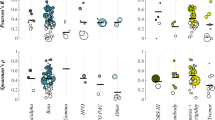Abstract
Parkinson’s disease (PD) is a complex chronic disorder characterized by four classes of cardinal motor symptom features—tremor, bradykinesia, rigidity, and postural instability. Even though clinical benefits of deep-brain-stimulator(DBS) in subthalamic-nuclei (STN) neurons have been established, albeit, how its mechanisms enhances motor-features reduces tremor and restores and increases motor function have not been fully customized. Also, its objective methods for quantifying efficacy of DBS are lacking. We present a latent variate factorial (or factor) principal component analysis-based method to predict UPDR score objectively. Twelve PD subjects are included in this study. Our hypothesis in this study is that whether the DBS saves the STN neurons and restores motor function after the reduction of tremor or damages. In our long study, the high-frequency stimulation in diseased brain did not damage subthalamic nuclei (STN) neurons but protected. Further, it is risk-free to stimulate STN much prior than it was accepted far so. The latent variate factorial is a statistical mathematical technique principal component analysis (PCA)-based method for computing the effects of DBS in PD. We extracted and then extrapolated microelectrode signal recordings (MER) of STN neurons features. The signal parameters were transformed into a lower-dimensional feature space. So we could predict the disease at an early stage.
Access this chapter
Tax calculation will be finalised at checkout
Purchases are for personal use only
Similar content being viewed by others
References
Jankovic J (2008) Parkinson’s disease: clinical features and diagnosis. J Neurol Neurosurg Psychiatry 79:368–376 [PubMed: 18344392]
Fahn S, Elton RL (1987) The Unified Parkinsons disease rating scale. In: Fahn S, Marsden CD, Calne DB, Goldstein M (eds) Recent developments in Parkinsons disease. Macmillan Healthcare Information, Florham Park, N.J, pp 153–163
Antoniades CA, Barker RA (2008) The search for biomarkers in Parkinsons disease: a critical review. Expert Rev 8(12):1841–1852
Morgan JC, Mehta SH, Sethi KD (2010) Biomarkers in Parkinsons disease. Curr Neurol Neurosci Rep 10:423–430 [PubMed: 20809400]
Strauss E, Lasker Foundation (2014) Lasker~DeBakey Clinical Medical Research Award to Alim Louis Benabid and Mahlon DeLong. Award description: for the development of deep brain stimulation of the subthalamic nucleus, a surgical technique that reduces tremors and restores motor function in patients with advanced Parkinson’s disease, pp 1–4. http://www.laskerfoundation.org/awards/2014_c_description.htm
DeLong M (2014) Laskar award winner. Nat Med 20(10)
Benabid AL, Chabardes S, Mitrofanis J, Pollak P (2009) Deep brain stimulation of the subthalamic nucleus for the treatment of Parkinson’s disease. Lancet Neurol 8:67–81 [PubMed: 19081516]
Squire L, Berg D, Bloom FE, du Lac S, Ghosh A, Spitzer NC (2012) Fundamental neuroscience, 4th edn. AP Academic Press
Andrade-Souza YM, Schwalb JM, Hamani C, Eltahawy H, Hoque T, Saint-Cyr J, Lozano AM (2008) Comparison of three methods of targeting the subthalamic nucleus for chronic stimulation in Parkinson’s disease. Neurosurgery 62(Suppl 2):875–883
Benabid AL (2003) Deep brain stimulation for Parkinson’s disease. Curr Opin Neurobiol 13(6):696–706
Benabid AL et al (1994) Acute and long-term effects of subthalamic nucleus stimulation in Parkinson’s disease. Stereotact Funct Neurosurg 62(1–4):76–84
Moran A et al (2008) Subthalamic nucleus functional organization revealed by Parkinsonian neuronal oscillations and synchrony. Brain 131(12):3395–3409
Defer GL (1999) Core assessment program for surgical intervention therapies in Parkinson’s disease. Mov Disord 14(4):572–584
Author information
Authors and Affiliations
Corresponding author
Rights and permissions
Copyright information
© 2019 The Author(s)
About this chapter
Cite this chapter
Raju, V.R., Neerati, L., Sreenivas, B. (2019). Latent Variate Factorial Principal Component Analysis of Microelectrode Recording of Subthalamic Nuclei Neural Signals with Deep Brain Stimulator in Parkinson Disease. In: Soft Computing and Medical Bioinformatics. SpringerBriefs in Applied Sciences and Technology(). Springer, Singapore. https://doi.org/10.1007/978-981-13-0059-2_9
Download citation
DOI: https://doi.org/10.1007/978-981-13-0059-2_9
Published:
Publisher Name: Springer, Singapore
Print ISBN: 978-981-13-0058-5
Online ISBN: 978-981-13-0059-2
eBook Packages: Intelligent Technologies and RoboticsIntelligent Technologies and Robotics (R0)




